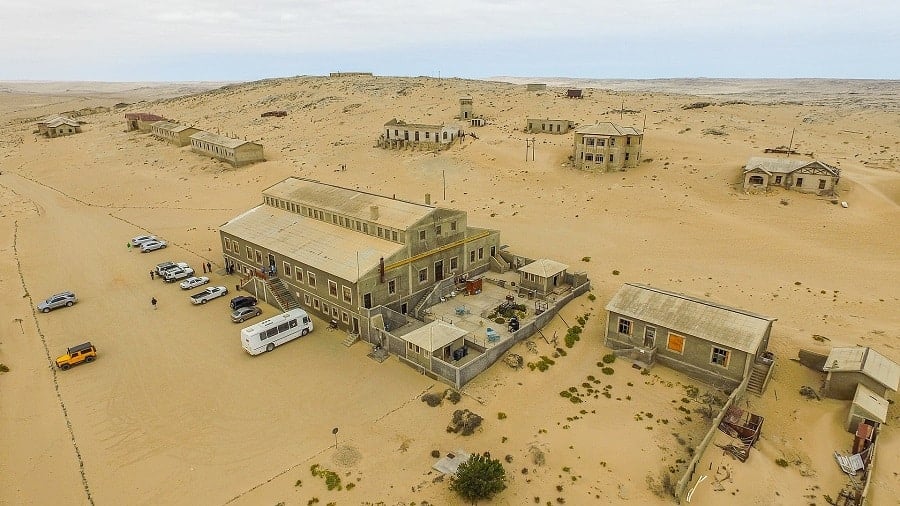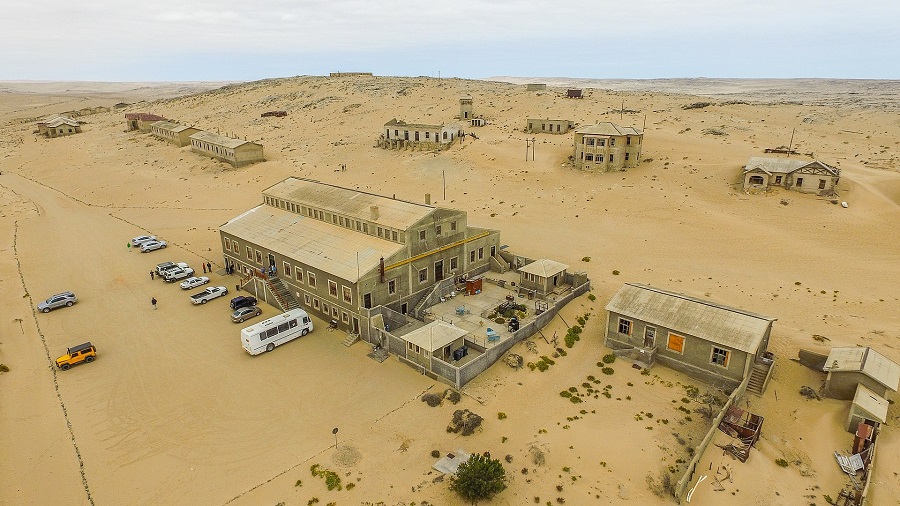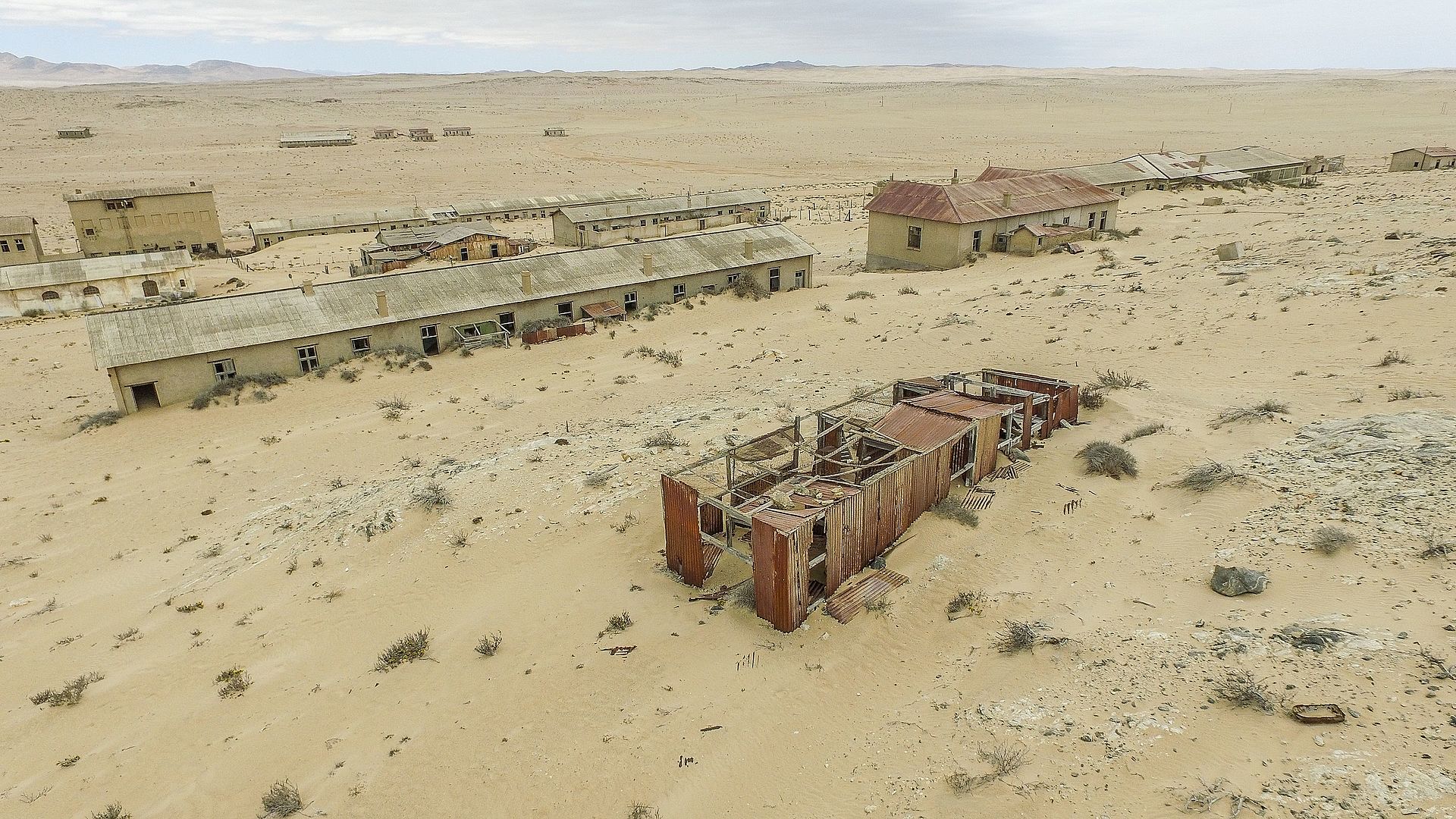

Kolmanskop, a once-thriving diamond mining town nestled in the Namib Desert, is now a ghost town visited only by tourists who regard it as a haunted town due to its history and spooky appearance.
Its history started in 1908, when a railway worker named Zacharias Lewala stumbled upon a sparkling stone along the riverbed that turned out to be a diamond, leading to the discovery of significant diamond deposits in the area.
The discovery sparked a diamond rush, drawing fortune seekers from far and wide to establish Kolmanskop as a diamond mining center. By 1912, a town had sprung up, producing a million carats a year or 11.7 percent of the world’s total diamond production.
As diamond production grew, Namibia‘s Kolmanskop evolved from a modest settlement to a thriving town. The influx of mining companies and workers brought about rapid urbanization, industrialization, and infrastructure development.

The town boasted amenities such as a hospital, school, theater, and even a tram system, which reflected its prosperous state.
The buildings, constructed primarily by German immigrant architects, featured distinct German colonial characteristics, combining elements of both German and Namibian design. This blending of styles created a remarkable aesthetic that still captivates visitors today.
The diverse population of Kolmanskop, including miners, merchants, and their families, developed a vibrant social fabric. Settlers from various backgrounds brought their customs and traditions, fostering a rich multicultural environment. Despite the harsh desert conditions, residents established recreational clubs, sports teams, and social gatherings, illuminating the unique spirit of community that permeated Kolmanskop.
Kolmanskop’s prospectors were becoming rich overnight simply picking diamonds off the desert floor, but German colonial authorities wanted greater control over the incredible riches.
According to a report in National Geographic, they cracked down, declaring a vast area of Namibia a Sperrgebiet, or restricted zone, forbidding entry to ordinary people and reserving prospecting rights for a single, Berlin-based company.
However, as diamond resources in the area were depleted, the town was gradually abandoned. The residents left behind their homes, possessions, and even some personal belongings, creating a ghostly atmosphere of a town frozen in time.

Hastening the town’s demise was the discovery in 1928 of the richest diamond-bearing deposits ever known. These were on the beach terraces 270 km south of Kolmanskop near the Orange River.
By 1956, Kolmanskop was completely abandoned. The dunes that once rolled over Lewala’s railway tracks now burst through the ghost town’s doors and porches, filling its rooms with smooth banks of sand.
In the decades following its abandonment, Kolmanskop transformed into a popular tourist attraction, drawing visitors who sought to witness the remnants of a once-prosperous town swallowed by the desert.
Visitors and paranormal enthusiasts have reported various ghostly encounters and strange occurrences in Kolmanskop. These stories include hearing disembodied voices, footsteps, and the feeling of being watched. Some claim to have seen apparitions or encountered unexplained phenomena, contributing to the town’s haunted reputation.
Kolmanskop’s isolation and the eerie silence of the desert contribute to the eerie and unsettling atmosphere, making it a prime location for ghost stories and urban legends.
